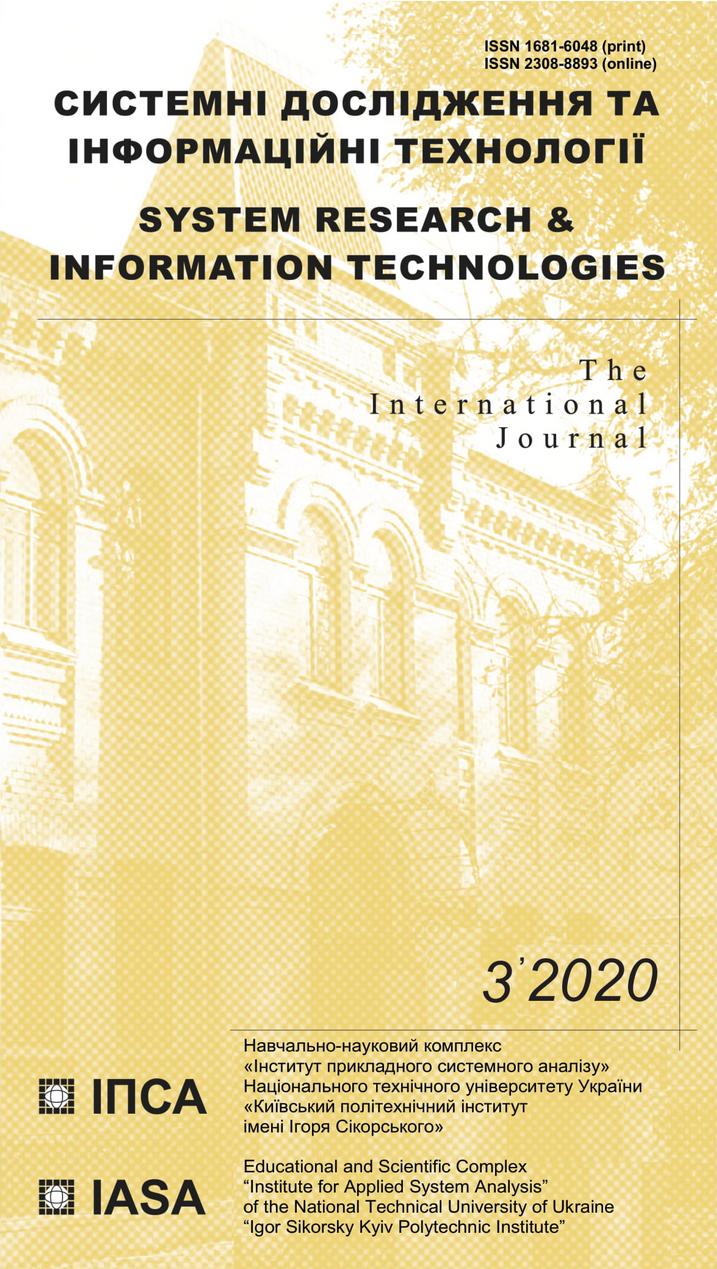Modeling of contact interaction of a heated plane rigid elliptical punch with a transversally isotropic elastic half-space
DOI:
https://doi.org/10.20535/SRIT.2308-8893.2020.3.10Keywords:
mathematical model, contact interaction, elastic half-space, transversally-isotropic material, plane elliptical punch, heating, stress distribution, domain of material separationAbstract
On the base of a rigorous mathematical model, the problem of the contact interaction of a heated flat punch of an elliptical section with a transversely isotropic elastic half-space is investigated. It is assumed that the half-space surface is the isotropy plane of a transversely isotropic material, and also that there is a smooth (without friction) contact. Expressions of contact stresses and displacements of a heated flat elliptical punch are found explicitly. In the form of a simple inequality, a condition for separating the elastic material from the surface of a flat elliptical punch is obtained. Numerical calculations are carried out. Contact interaction of a heated flat punch is studied taking into account the separation of material from the punch.References
J.R. Barber, Contact Mechanics. New York, USA: Springer, 2018.
K.L. Johnson, Contact Mechanics. Cambridge, Great Britain: Cambridge Univ. Press, 1985.
A.I. Lurie, Theory of Elasticity. Berlin, Germany: Springer, 2005.
L.A. Galin and G.M.L. Gladwell (Editor) Contact Problems. Dordrecht, Germany: Springer, 2008.
L.A. Galin, Development of the Theory of Contact Problems in the USSR [in Rus-sian]. Moscow, USSR: Nauka, 1976.
N.M. Borodachev, “On solving the contact problem of thermoelasticity in the case of axial symmetry”, Izv. AN SSSR, Otd.Tekhn. Nauk Mekh. Mashinost, no. 5, pp. 86–90, 1962.
J.R. Barber, “Indentation of an elastic half space by a cooled flat punch”, Q.J. Mech. Appl. Math., vol. 35, no.1, pp. 141–154, 1982.
Yu.N. Podil'chuk, V.F. Tkachenko, Ya.I. Sokolovskii, “Thermoelastic contact prob-lem on the penetration of a transversely isotropic half-space by a heated die elliptical in plan”, Int. Appl. Mech., vol. 32, no. 11, pp. 851–857, 1996.
D.V. Grilitsky and Ya.M. Kizyma, Axisymmetric contact problems of the theory of elasticity and thermoelasticity [in Russian]. Lvov, Ukraine: Vyshcha Shkola, 1981.
B.G. Shelestovskii and G.V. Gabrusev, “Thermoelastic state of transversely isotropic layer between two annular punches”, Int. Appl. Mech., vol. 40, no. 4, pp. 417–425, 2004.
Y.S. Chai and I.I. Argatov, “Local tangential contact of elastically similar, trans-versely isotropic elastic bodies”, Meccanica, vol. 53, no. 11–12, pp. 3137–3143, 2018.
V.I. Fabrikant, “Contact problem for an arbitrarily oriented transversely isotropic half-space”, Acta Mechanica, vol. 228, no. 4, pp. 1541–1560, 2017.
P.F. Hou, W.H. Zhang and J.-Y.Chen, “Three-dimensional exact solutions of homo-geneous transversely isotropic coated structures under spherical contact”, Int. J. Solids Structures, vol. 161, no. 5, pp. 136–173, 2019.
F. Marmo, F. Toraldo and L. Rosati, “Analytical formulas and design charts for transversely isotropic half-spaces subject to linearly distributed pressures”, Meccanica, vol. 51, no. 11, pp. 2909–2928, 2016.
Yu.V. Tokovyy and C.C. Ma, “Three-dimensional elastic analysis of transversely-isotropic composites”, Journal of Mechanics, vol. 33, no. 6, pp. 821–830, 2018.
V.S. Kirilyuk, “On the relationship between the solutions of static contact problems of elasticity and electroelasticity for a half-space”, Int. Appl. Mech., vol. 42, no. 11, pp. 1266–1269, 2006.
V.S. Kirilyuk and O.I. Levchuk, “Indentation of punches into a piezoceramic body: Two-dimensional contact problem of electroelasticity”, Int. Appl. Mech., vol. 44, no. 11, pp. 1244–1257, 2008.
V.S. Kirilyuk, “Stress state of a piezoceramic body with a plane crack opened by a rigid inclusion”, Int. Appl. Mech., vol. 44, no. 7, pp. 757–768, 2008.
V.S. Kirilyuk and O.I. Levchuk, “Stress state of an orthotropic piezoelectric material with an elliptic crack”, Int. Appl. Mech., vol. 53, no. 3, pp. 305–312, 2017.
V.S. Kirilyuk, O.I. Levchuk, and H. Altenbach, “Calculation of stress intensity fac-tors for an arbitrary oriented penny-shaped crack under inner pressure in an orthotropic electroelastic material”, Advanced Structured Materials, vol. 108, pp. 211–222, 2019.
Yu.N. Podil’chuk, “Exact analytical solutions of static electroelastic and thermoelec-troelastic problems for a transversely isotropic body in curvilinear coordinate sys-tems”, Int. Appl. Mech., vol. 39, no. 2, pp. 132–170, 2003.
V.S. Kirilyuk, “The thermoelastic equilibrium of a transversally isotropic medium with an elliptic crack under symmetric loading”, Int. Appl. Mech., vol. 36, no. 4, pp. 509–517, 2000.
V.S. Kirilyuk, “Equilibrium of a transversally isotropic body with an elliptic crack under thermal action”, Int. Appl. Mech., vol. 37, no. 10, pp. 1304–1310, 2001.
V. Pauk, “Plane contact of hot flat-ended punch and thermoelastic half-space involv-ing finite friction”, J. Appl. Mech., vol. 74, no. 6, pp. 1172–1177, 2007.

